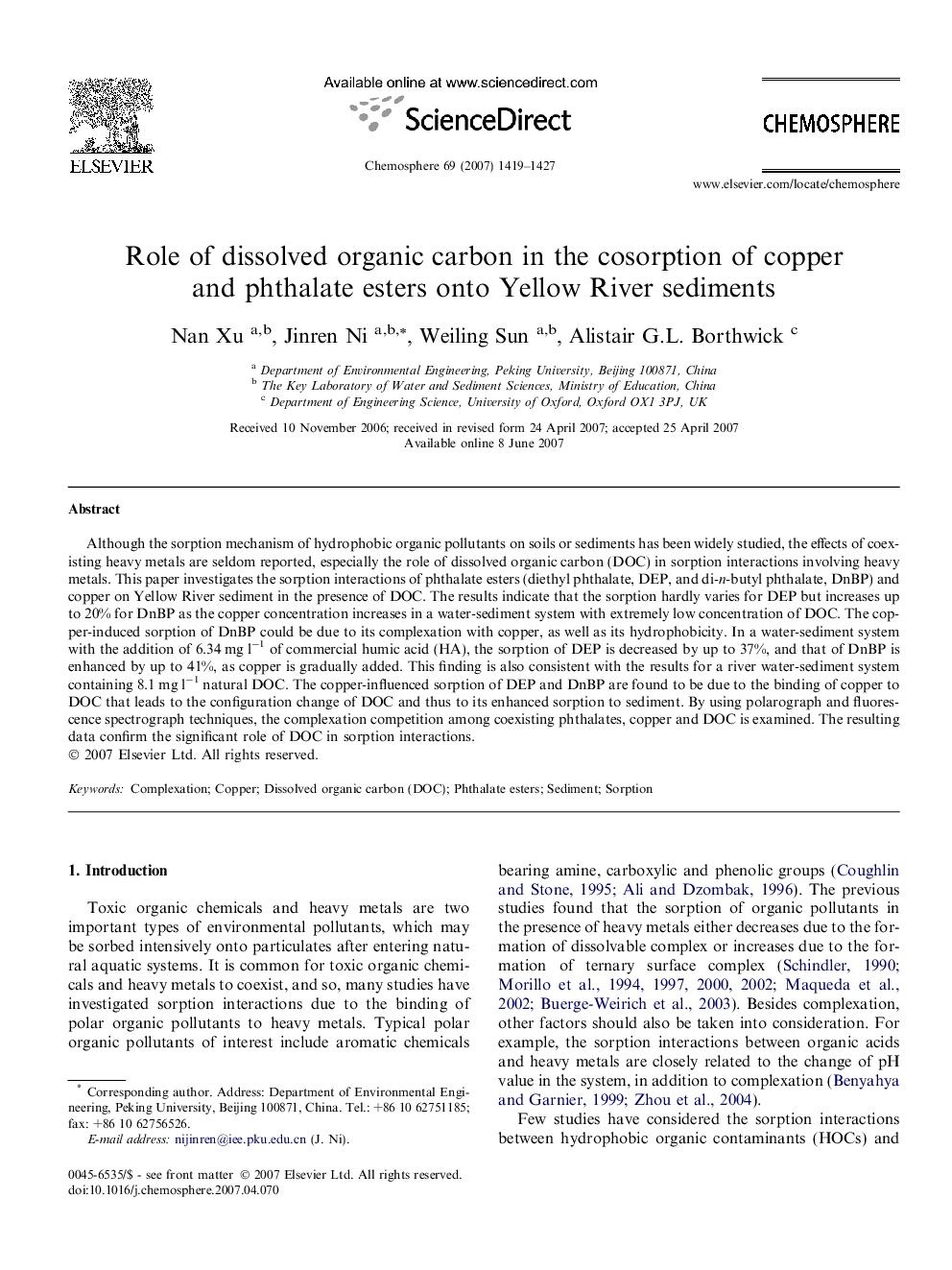| Article ID | Journal | Published Year | Pages | File Type |
|---|---|---|---|---|
| 4415212 | Chemosphere | 2007 | 9 Pages |
Although the sorption mechanism of hydrophobic organic pollutants on soils or sediments has been widely studied, the effects of coexisting heavy metals are seldom reported, especially the role of dissolved organic carbon (DOC) in sorption interactions involving heavy metals. This paper investigates the sorption interactions of phthalate esters (diethyl phthalate, DEP, and di-n-butyl phthalate, DnBP) and copper on Yellow River sediment in the presence of DOC. The results indicate that the sorption hardly varies for DEP but increases up to 20% for DnBP as the copper concentration increases in a water-sediment system with extremely low concentration of DOC. The copper-induced sorption of DnBP could be due to its complexation with copper, as well as its hydrophobicity. In a water-sediment system with the addition of 6.34 mg l−1 of commercial humic acid (HA), the sorption of DEP is decreased by up to 37%, and that of DnBP is enhanced by up to 41%, as copper is gradually added. This finding is also consistent with the results for a river water-sediment system containing 8.1 mg l−1 natural DOC. The copper-influenced sorption of DEP and DnBP are found to be due to the binding of copper to DOC that leads to the configuration change of DOC and thus to its enhanced sorption to sediment. By using polarograph and fluorescence spectrograph techniques, the complexation competition among coexisting phthalates, copper and DOC is examined. The resulting data confirm the significant role of DOC in sorption interactions.
